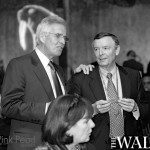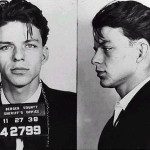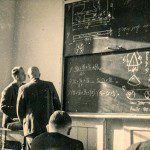A Q&A with Tom Hanson Photojournalism Award winner Michelle Siu
When I received an e-mail this past November from the Canadian Journalism Foundation about the Tom Hanson Photojournalism Award’s call for applications, I was intrigued. I rarely open the dozens of subscription e-mails I get on a daily basis, but being an avid photographer, this one caught my eye.
The six-week paid internship at The Canadian Press’s head office in Toronto offers up-and-coming photojournalists who have been working in the field for less than five years the opportunity to make a name for themselves by performing on the national stage.
I sent in two dozen photos, typed up a 1,000-word essay, polished up my résumé, and applied—knowing the odds of being chosen were slim to none. Alas, I did not win (please, hold your tears), but after looking at the portfolio of winner Michelle Siu, a Toronto-based freelancer, I could see I never stood a chance.
Siu has a special way of capturing all kinds of emotions, from sheer joy to utter despair. Take a look at her website and award portfolio and try not to lose yourself in her photos.
I wanted to get to know a little bit more about Siu, and help the journalism community get to know her better as well. After exchanging a handful of e-mails with her, it became clear that the Tom Hanson Award committee made an excellent choice; Siu is not only an excellent photographer, but she has the drive and know-how to succeed.
Let’s all raise our glasses and wish Siu the best of luck during her time at The Canadian Press!
Where did you grow up?
I was born in Montreal, then lived in Saskatoon for a few years before moving to Mississauga.
Two years ago I quit a full-time career, spent nearly all my savings on gear, and worked extremely hard to pursue a career I’ve always wanted but felt was impossible to achieve. So, like many, I’ve liked it at a young age, but it wasn’t until later that I had the money and courage to pursue it.What did you study in school?
I took media studies, specializing in public relations at the University of Guelph-Humber, and one semester of photojournalism at Loyalist College. I am pretty introverted, and PR was really never what I wanted to study or do as a career. I have no idea how I ended up there, but I worked as hard as I could to get back to a career I wanted as a kid.
What made you want to become a photojournalist?
The only type of photographer I wanted to be is a photojournalist, because I can think of no better picture than one that serves to tell a story.
Where have you travelled for work? Which location was your favourite? Why?
Along with shooting for publications, I have been lucky to also land a freelance contract with Canadian aid agency World Vision, which has taken me to Zimbabwe, Burundi, Rwanda, and Cambodia.
I think it’s in the DNA of every photographer to want to travel to remote places others do not have access to. I most certainly have that wanderlust mentality, but I also admire those local photojournalists who push themselves on a daily basis to make compelling photos on more ordinary assignments here at home.
It takes a different skill set to make compelling photos without the advantage of being somewhere unique where your audience may never have the chance to go.
You applied last year for the Tom Hanson Photojournalism Award, but were not chosen as the 2011 award recipient. What made you apply again?
Simply put, I wasn’t good enough and I wanted to be, so I practised day in and day out to get better. Between last year and now, I continued to learn by shooting on my own and working full time at a community paper, interning at The Globe and Mail and absorbing all the criticism and advice that came my way.
What do you hope to learn during your six weeks at The Canadian Press?
I want to expand my ability to make clean, compelling, story-telling images while also being less afraid to take creative risks here in Toronto. I’d like to learn how to be a well-rounded photographer shooting assignments locally.
If you weren’t a photojournalist, what do you think you would be doing right now?
Hopefully not a desk job. I’ve tried my hand at that and I get very restless. I’ve toyed with the idea of being a paramedic if this photojournalism thing doesn’t pan out in the future.
Who is your favourite photographer?
Right now I don’t have a favourite, but looking at some of Lauren Greenfield’s work is part of what pushed me to take a risk to try and pursue a career in photojournalism.
What, to you, differentiates a good photograph from an excellent one?
A picture that compels viewers to want to know more or take action.
What advice would you give to other young aspiring photojournalists?
I don’t know, as I could really use some myself! But I suppose from my limited experience, it’s an incredibly competitive field and you have to give it everything you’ve got and work as hard as you can—harder than your competitors, who are probably also your friends.
Take advice from those with more experience, don’t have an ego, be happy for other people’s successes even when if they’re at the expense of your own, and probably most importantly, make sure you are still enjoying the ride.
Aside from photography, what are some ways you like to spend your time?
Is it awful that right now I’ve been living, eating, and breathing photography?
If you could work alongside any photographer—dead or alive—for a day, who would it be? Why?
Very tough question, as there are plenty, but the first person who comes to mind, of course, is Tom Hanson.
As a new photographer, I follow the work of talented photojournalists very closely. Scouring websites, following as many publications as possible, paying close attention to bylines, and comparing coverage. Seeing the work of Tom, reading the coverage after his tragic death, and hearing about him from his friends and colleagues makes me certain that I can learn how to be a better journalist, photographer, and friend from him.
As clichéd as it is, I have to ask: Where do you see yourself in 10 years? What do you hope to have achieved by then?
In 10 years I hope I will continue to enjoy shooting. I hope I will keep pushing myself to be better and learn, no matter how long I am in the business. Specifically, I was initially drawn to photojournalism to work on projects, and I’m disappointed that I haven’t been able to work on more. I worked really hard on one on migrant workers, but I should be doing more.
As a photojournalist, it’s great trying to make one picture that tells the story, but a project has the ability to really impact and inform audiences, and it also pushes me to be a better photographer—so in 10 years, I hope to have pushed myself to do that.














